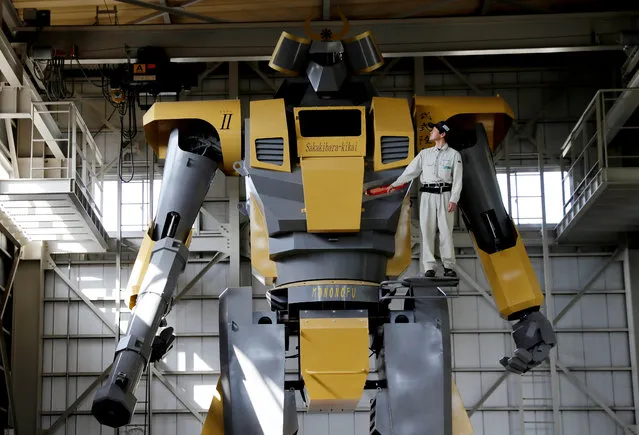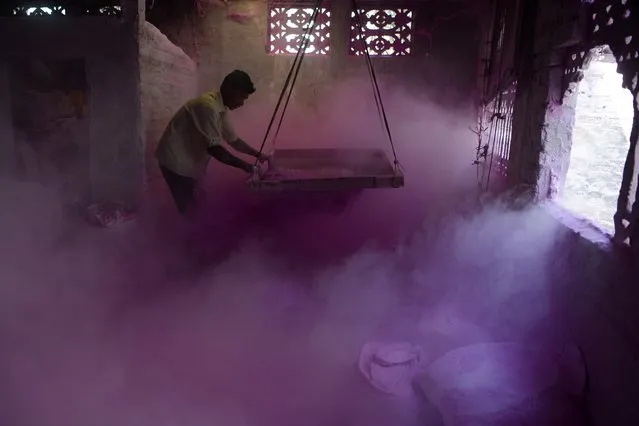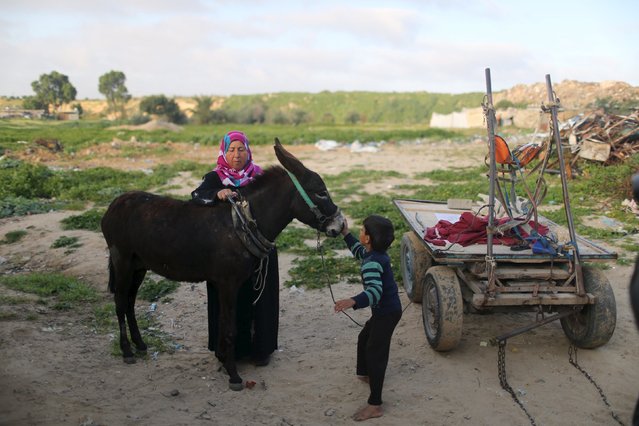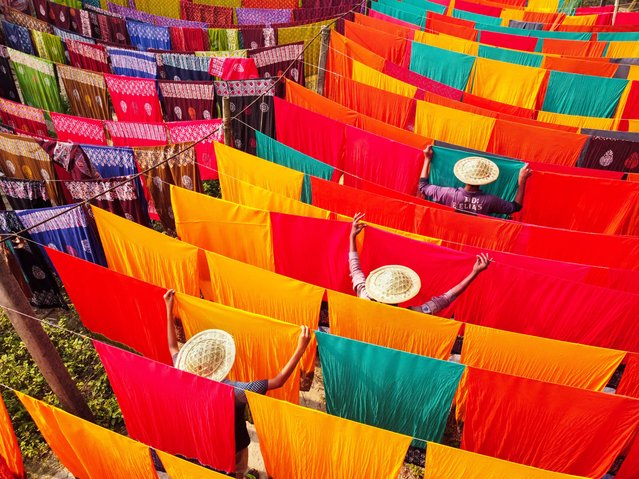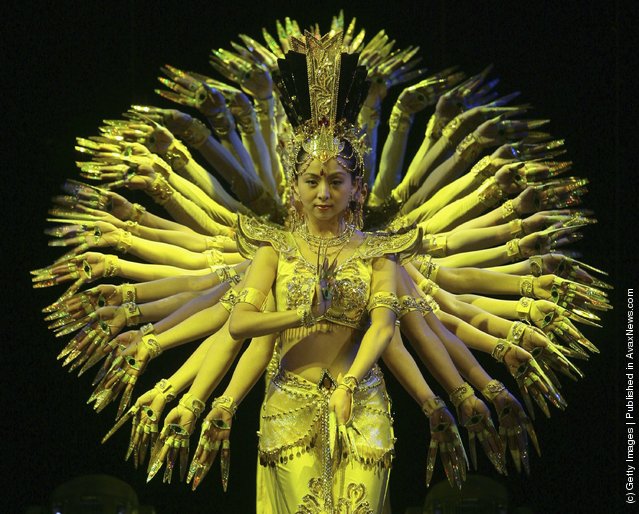
Members of China Disabled Peoples Performing Art Troupe perform “Thousand-arm Goddess of Mercy” during a show on March 12, 2005 in Guangzhou of Guangdong Province, China. China Disabled Peoples Performing Art Troupe was established in 1987. It is an amateur mass art troupe composed of visually impaired, audibly impaired and physically and mentally challenged people. In the past nearly two decades, the troupe has visited more than 30 countries and regions, winning the hearts of audiences all over the world by their solid background of Chinese Culture and their colourful national charm. (Photo by China Photos/Getty Images)
22 Aug 2013 12:30:00,post received
0 comments



